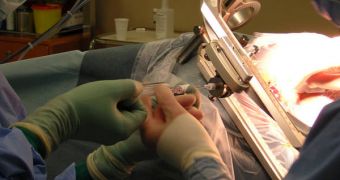Undergoing a biopsy is always a very complicated or painful process, when doctors use needles to take out a small piece of your liver, brain, lungs, or other organ. However, they are absolutely necessary, as they are the only way for experts to see if cancers or other conditions are developing in a patient. However, biopsies may soon become a thing of the past, as researchers at the Stanford University School of Medicine (SUSM) have announced that they have developed a new investigation method, which could replace the invasive technique with a harmful procedure.
The scientists say that a drop of blood, or simply a piece of skin about the same size as the tip of a sewing needle, will more than suffice to identify diseases in the future, or assess their evolution.
“Currently, we don't know what's going on in a patient's actual tumor cells when a treatment is given. The standard way we measure if a treatment is working is to wait several weeks to see if the tumor mass shrinks. It would really be a leap forward if we could detect what is happening at a cellular level,” SUSM Division of Oncology Clinical Instructor, Oncologist Alice Fan, MD, said.
At the base of the new technique is a revolutionary machine, which is capable of scanning the harvested sample of skin or blood for the proteins that are usually associated with the development of cancer, PhysOrg reports. It can even tell if the treatments that have been administered are working or not, depending on the concentration of certain molecules in the sample. Thus far, it has been perfected to cover cancer detection, but the scientists who have developed it say that the tool could soon be adapted to cover a range of other medical conditions as well.
“This technology allows us to analyze cancer-associated proteins on a very small scale. Not only can we detect picogram levels – one-trillionth of a gram – of protein, but we can also see very subtle changes in the ways the protein is modified,” Stanford Cancer Center member Dean Felsher, MD, PhD, who is also the Stanford Molecular Therapeutics Program leader and an associate professor of medicine and pathology, added. He has also been the senior author of a new study detailing their research, which was published online, in the April 12th issue of the journal Nature Medicine. Alice Fan has been the lead author of the paper.
“Surgical biopsies usually require general anesthesia and large amounts of tissue. If we can figure out how to go in with a needle and remove just a few cells for analysis, we could repeatedly assess how the tumor is responding to treatment. This is really a complement to existing diagnostic and therapeutic methods,” Fan concluded.

 14 DAY TRIAL //
14 DAY TRIAL //